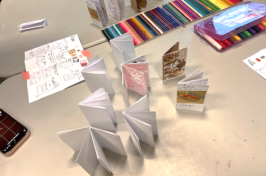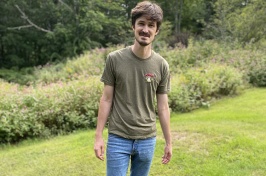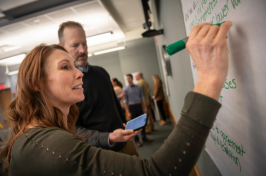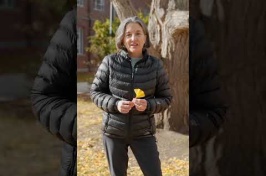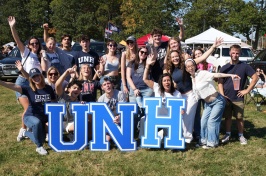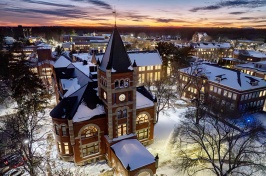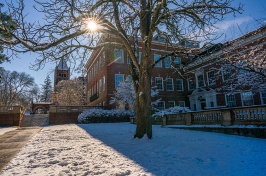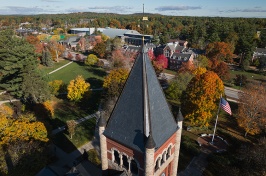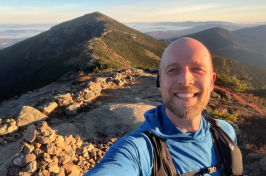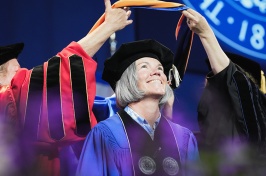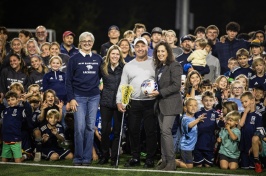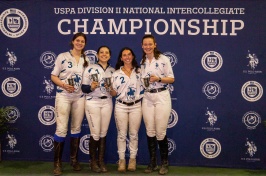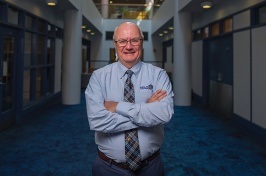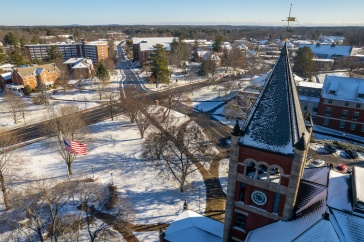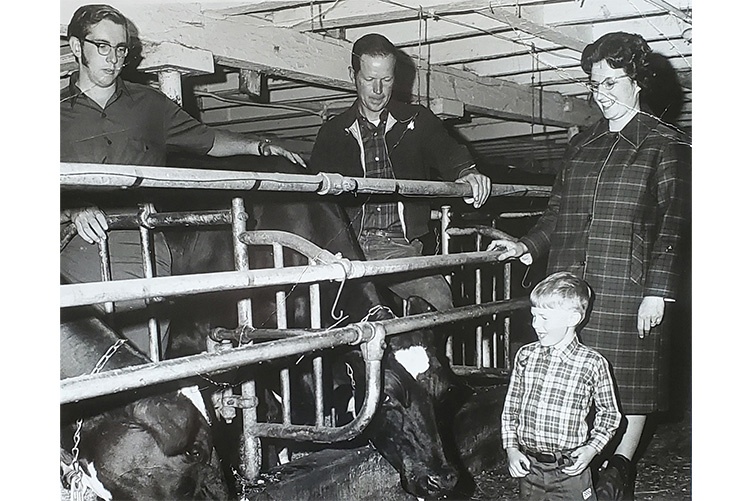
David and Louise Osborne with their son, Andy, and Osborne Farm employee John Saturley in the cow barn. (Courtesy photo)
John Porter’s time working with the Osborne family at their farm in Pittsfield over nearly five decades has produced plenty of fond memories. And some unforgettably cold ones.
Porter, an emeritus UNH Cooperative Extension specialist, first made a connection with the Osbornes as a green new Extension hire in the mid-1970s, frequently venturing to what was at the time an active dairy farm.
The Osborne Farm has evolved plenty over the years – the dairy operation is a distant memory at this point, and the family currently operates a series of Osborne's Farm & Garden stores – but the one constant has been the lineage, as the farm recently celebrated 250 years of continuous ownership within the Osborne family.

UNH Cooperative Extension has played a vital role in helping the Osborne family adapt their farm business over the course of several generations, providing critical expertise at several important transitional stages. The farm recently celebrated 250 years of continuous ownership within the Osborne family.
The milestone prompted Porter to reflect on memories of his interactions with the family over the last 50 years. And many of them begin with a chill.
“The mental image I always have with that family and the image that always comes back when I think about them is leaning on the milk bulk tank with our paperwork all spread out and being really cold,” Porter quips. “They live at one of the highest points in that area with some truly beautiful views, but it’s known for the wind always blowing. It seemed like every farm visit I did up there we were freezing.”
Gusty conditions aside, the relationship was a professionally formative one for Porter, who retired 19 years ago from his full-time job with Extension. And the image of those papers on the milk tank putting up a fight against a persistent breeze is particularly illustrative of the kinds of relationships Extension staffers try to build with Granite State farmers and other agricultural outlets – a personal touch combined with the sharing of key expertise and information.
“It just emphasizes that in this day and age, with lots of question about federal funding, how important Extension’s work really is – that connection to the university and getting some of that knowledge and current research back to farms. It’s hugely critical,” says Tom Osborne ’94, a UNH graduate himself who now manages the family farm with his brother, Paul – the eighth generation of his family to do so.
“It’s been very rewarding to see another generation taking it up and continuing the work,” Porter says. “It’s a unique thing to carry out that long.”
Indeed, Extension has played an important role in the farm’s success and evolution. One of Porter’s first major contributions was helping the Osbornes shift to least-cost rations – an approach focused on meeting an animal's nutritional needs at the lowest possible cost – for feeding dairy cattle. Having recently matriculated from grad school when he first met the Osbornes, Porter was freshly trained in the process and was one of a few people in the country promoting it at the time.
“They were fairly early adopters,” Porter says. “They trusted me as a young person starting out. They followed the feeding guidelines we introduced and were quite successful in milk production.”

The Osbornes left the dairy game in the mid-1980s, investing in a feed store in Hooksett in 1987 that eventually led to multiple locations in the state (including Concord and Belmont). As the farm evolved from dairy farming to producing hay, another UNH and Extension connection – Carl Majewski, one of Tom Osborne’s fraternity brothers from Alpha Gamma Rho and an Extension specialist – played a critical role in the transition.
“Carl spent the day with us, walking the land, looking at our fields and at species of grasses, and he gave us a lot of suggestions,” Osborne says. “And out of that he organized a farmer-to-farmer Extension meeting last spring where we got together with a bunch of other farmers who are trying to do what we’re doing. It’s just huge – Carl really helped us kind of dial in what we’re doing, and he was definitely an invaluable resource with his crop knowledge. There’s a lot of value that Extension still offers to what we’re trying to do.”
Osborne – who studied animal science at UNH as part of a track that “certainly shaped my career path,” he says – and his brother took the reins of the farm from their parents, David and Louise, who met through another UNH connection as delegates for the international 4-H youth exchange in the 1950s.
The family first settled the land in 1775 and has passed through nearly 10 generations since. It was recognized in 1976 as one of New Hampshire’s 54 bicentennial farms.
According to a history put together by Porter, the early days of the farm in the 18th century included a focus on redware pottery. The transition to dairy took place in the late 19th century, and in the late 1960s the farm underwent a major transformation with a herd expansion and a switch to the free stall dairy housing system and milking parlor to replace the original stanchion and tie stall housing. That led to Porter’s involvement and the changeover to least-cost rations in the 1970s.
Porter has watched the farm’s evolution over time, as structures have been built and torn down and equipment has continued to change as new technology and approaches become available. The switch away from dairy led to the removal of all of the animals and eventually to several dairy barns being converted into facilities for housing cordwood and hay.
One of the bigger decisions Porter helped the family make a couple of years ago was tearing down an original cow barn and replacing it with a new structure that maintained as much of the classic look as possible while being more compatible with modern technology used to unload hay.
That incorporation of state-of-the-art structures and the use of more advanced tools feels a long way from those gusty early meetings, but it also highlights for Porter just how much of a positive and long-lasting influence Extension can have on the state’s agricultural landscape.
“Families like the Osbornes know that we’ve been with them through thick and thin – we’ve worked with farmers on the edge of going out of business and worked out plans to keep them going, so there are some pretty strong relationships,” Porter says. “It’s a great example of what the land-grant mission is all about – it’s reaching out to our citizens and bringing them information to keep progressing and adopting new techniques, and then having that strong support from them afterward.”
-
Written By:
Keith Testa | UNH Marketing | keith.testa@unh.edu

